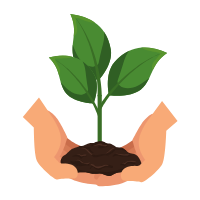A healthy and attractive lawn can do wonders for your home and property, improving and protecting its value and appearance. The following provides you with some recommendations to help keep your lawn healthy and an attractive part of your yard.
Clean Up Lawn Problems
Anything growing within your lawn that is not lawn is going to block out sunlight, moisture, and nutrients from your lawn plants and adversely affect its health and appearance. Weeds are one of the more common lawn blockages and will grow within the soil around your lawn's roots, eventually pushing out the lawn from its space and taking nutrients and moisture meant for your lawn. Weeds tend to grow aggressively, making them a problem for your lawn so you need to take an equally aggressive approach. Pull them by hand, cut them out with a lawn spade, or use an herbicide to kill their growth.
You may also find the layer of thatch in your lawn becomes thicker, usually in the spring after a season of your lawn being dormant. These dead grass blades collect around the base of your lawn plants and clog the soil to block nutrients and moisture. You can use a power rake or a thatch removal blade on your mower to lift up the thatch from around your lawn's natural layers. Some thatch is acceptable, but when it becomes thicker over time, it becomes a detriment to the health of your lawn.
Repair Thin Patches
Once you have removed any lawn problems with weeds or thatch, you can work to fill in the bare spots created by these issues. When your lawn is patchy, it is not only ugly but it will leave space for weeds to more easily take over once again. So plan to fill the patches with a healthy combination of soil nutrients and lawn seed to get it started.
Rake up the soil to loosen it in the bare spots and add in a mixture of peat moss, compost, or fertilizer with lawn seeds. Peat moss will help hold in the moisture to germinate the seeds and will also protect the seeds from erosion and displacement. Make sure you choose the right type of lawn seed to reseed into the soil so you grow a lawn suitable for the climate and spot in your yard. If you are reseeding a shaded area, for example, select a fine fescue to reseed into the area because it is a grass that does well in low light areas.
Reach out to a professional for lawn maintenance assistance.

 When you move into a new home, relandscaping the garden is one way to have it reflect your personality. However, before buying any new plants, you need to know which ones suit your location climate the best.
When it is time to learn about landscaping and plants, but you don't know where to start, then you come to this website and start reading. Climate has a big impact on how well your new plants grow, so it is important to learn about soil testing, plant choice, and growth optimization, amongst other things.
The more you learn about plant choice and then their care, the better the odds of successful growing days.
When you move into a new home, relandscaping the garden is one way to have it reflect your personality. However, before buying any new plants, you need to know which ones suit your location climate the best.
When it is time to learn about landscaping and plants, but you don't know where to start, then you come to this website and start reading. Climate has a big impact on how well your new plants grow, so it is important to learn about soil testing, plant choice, and growth optimization, amongst other things.
The more you learn about plant choice and then their care, the better the odds of successful growing days.